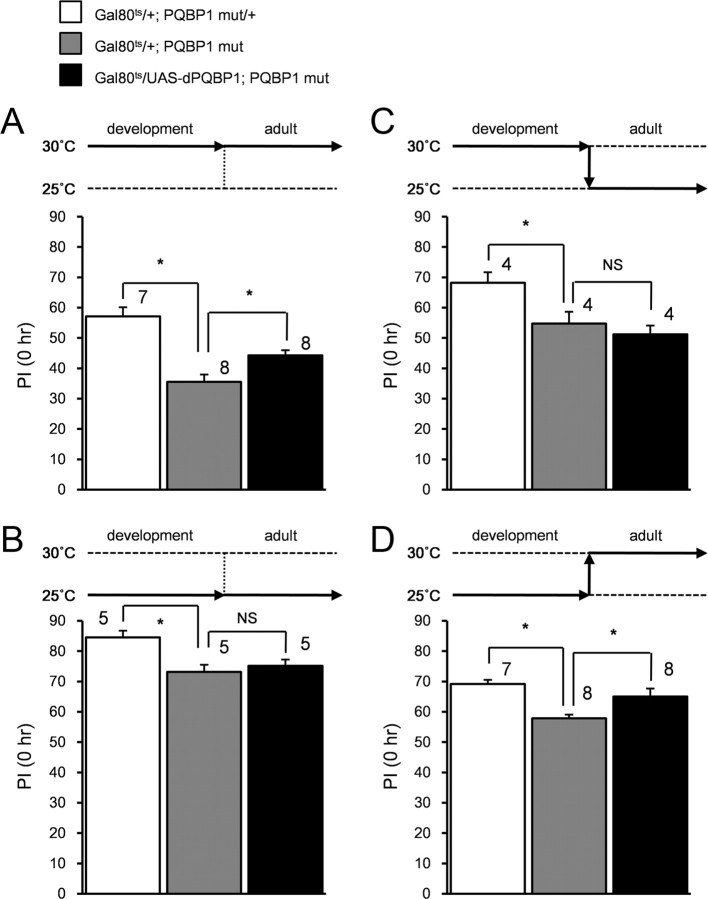Figure 4.
Expression of dPQBP1 is necessary at adult fly. Genotypes are labeled at top of the panels: the open bar indicates heterozygous control, the gray bar indicates dPQBP1 mutant, and the black bar indicates rescued flies. All genotypes carry heterozygous tublin-Gal80ts gene. Rearing conditions are shown as bold arrows above bar graphs. The y-axis of each graph is the performance index at 0 h. A, Flies were reared at 30°C throughout their life. B, Flies were reared at 25°C throughout their life. C, Flies were grown at 30°C during their development and adult flies were kept for 6 d at 25°C until the memory test. D, Flies were grown at 25°C during their development and adult flies were kept for 6 d at 30°C until the memory test. Mean ± SE are shown at each genotype. The asterisks between white and gray bars indicate significant difference from the controls (p < 0.05; we used Welch's t test because the mutant should different from the heterozygous control at all temperature). The asterisks between gray and black bars indicate the significant rescue effect (p < 0.05; we used ANOVA and post hoc Dunnett's test to compare mutant with both WT and rescued flies). The sample sizes were shown above each bar.

